
Jin Yin Hua (Honeysuckle) (Original Name: Ren Dong)
Jin Yin Hua is named for its flowers, which are initially white and later turn yellow.

-
1. Morphological Characteristics
Jin Yin Hua is a perennial semi-evergreen shrub with climbing and creeping stems. The young branches are slender and hollow, with a brown to reddish-brown color. The leaves are ovate and opposite, densely covered with soft hairs and glandular hairs. It flowers in summer, with leaf-like bracts and fragrant, bilabiate flowers that are hairy and glandular on the outside. The stamens and style extend beyond the corolla, and the flowers grow in pairs in the leaf axils, initially white and gradually turning yellow, creating a striking contrast. The fruit is a spherical berry that turns black when ripe.
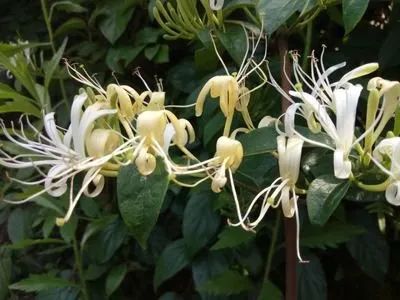
-
2. Growth Habits
Jin Yin Hua has strong adaptability, thriving in sunny and shady conditions, and is resistant to cold, drought, and waterlogging. It does not have strict soil requirements but grows best in moist, fertile, deep sandy loam, sprouting twice a year in spring and summer.
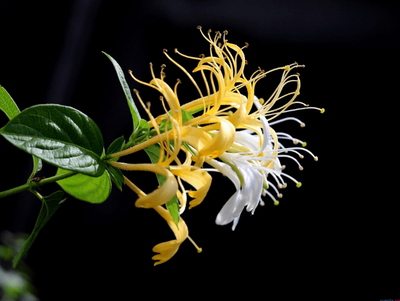
-
3. Distribution
The cultivation areas of Jin Yin Hua are mainly concentrated in Shandong, Shaanxi, Henan, Hebei, Hubei, Jiangxi, and Guangdong.
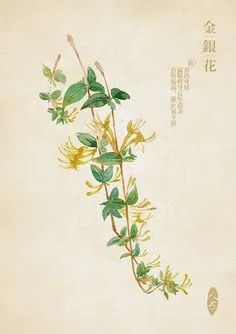
-
4. Main Values
Ornamental Value
Jin Yin Hua is more suitable for ground cover cultivation in shaded areas, forest edges, and the north side of buildings due to its stronger creeping growth compared to climbing. It can also be used for low green walls and can be utilized for creating flower corridors, flower racks, flower barriers, flower columns, and for winding around rockeries. Its advantages include vigorous growth and low maintenance, while its disadvantages include entangled vines and uneven ground coverage, which can appear chaotic.
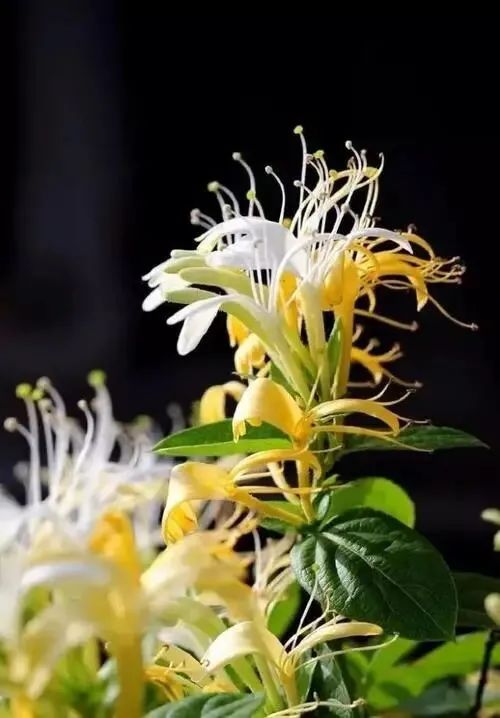
Economic Value
Jin Yin Hua Tea has unique weight loss properties and can inhibit and kill pathogens in the throat, providing anti-infection benefits for the elderly and children. Regular consumption of Jin Yin Hua infusions or decoctions is beneficial for treating and recovering from conditions such as wind-heat eye redness, sore throat, obesity, liver heat syndrome, and liver heat type hypertension.

Jin Yin Hua Extract is primarily used for clearing heat and detoxifying, suitable for alleviating thirst due to summer heat, and has unique therapeutic effects on heat toxins, sores, and children’s prickly heat. Regular consumption of Jin Yin Hua infusions or decoctions is beneficial for treating and recovering from conditions such as wind-heat eye redness, sore throat, obesity, liver heat syndrome, and liver heat type hypertension.
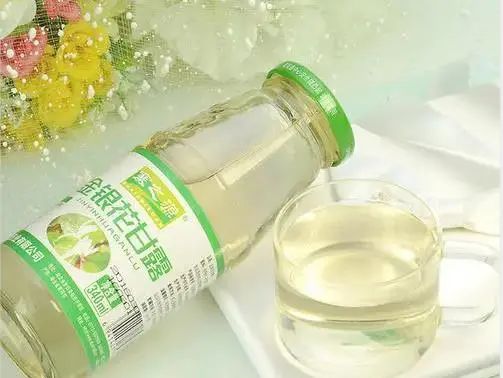
Medicinal Value
Effects:Primarily clears heat and detoxifies, treating febrile diseases, heat toxin dysentery, and carbuncles. Modern research has proven that Jin Yin Hua contains pharmacologically active components such as chlorogenic acid and luteolin glycosides, which have strong inhibitory effects on various pathogenic bacteria such as hemolytic streptococcus and Staphylococcus aureus, as well as viruses causing upper respiratory infections. Additionally, it can enhance immunity, prevent early pregnancy, protect the liver, combat tumors, reduce inflammation, lower fever, stop bleeding (coagulation), and inhibit intestinal cholesterol absorption, making its clinical applications very broad. It can be combined with other medications to treat over 40 conditions, including respiratory infections, bacterial dysentery, acute urinary tract infections, and hypertension.
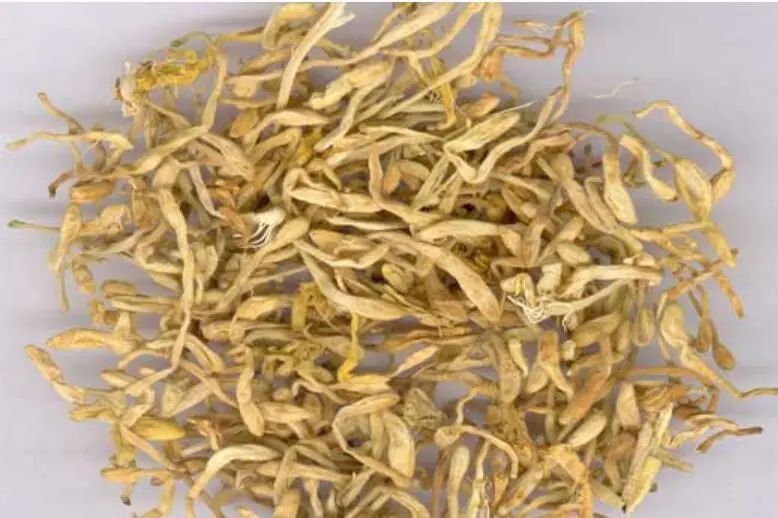
Clinical Applications:
1. Early Stage of Febrile Disease: + Lian Qiao (Forsythia), Bo He (Mint), Dan Dou Chi (Fermented Soybean) and others.
It has heat-clearing and detoxifying properties, suitable for the early stage of febrile disease with mild fever, aversion to cold, and slight thirst, similar to Yin Qiao San.
2. Carbuncles and Furuncles: + Pu Gong Ying (Dandelion), Zi Di Ding (Violet), Ye Ju Hua (Wild Chrysanthemum) and others.
Enhances heat-clearing and detoxifying effects, suitable for carbuncles and furuncles with redness, swelling, and pain, similar to Wu Wei Xiao Du Yin.
3. Mid Stage of Febrile Disease: + Huang Qin (Scutellaria), Zhi Zi (Gardenia), Shi Gao (Gypsum), Zhu Ru (Bamboo Shavings), Lu Gen (Reed Rhizome) and others.
Has heat-clearing, detoxifying, and harmonizing effects, suitable for obstructed heat, disharmony of stomach qi, fever, irritability, chest fullness, thirst, dry vomiting, red tongue with dry coating, and slippery rapid pulse.
4. Dysentery: + Huang Lian (Coptis), Chi Shao (Red Peony), Mu Xiang (Aucklandia), Ma Chi Xian (Portulaca) and others.
Has heat-clearing, regulating intestines, and blood-transforming effects, suitable for damp-heat obstruction, damaging intestinal membranes, with purulent blood diarrhea, more blood than pus, abdominal pain, and tenesmus.
5. Epidemic Dysentery: + Sheng Di Huang (Rehmannia), Chi Shao (Red Peony), Dan Pi (Moutan), Huang Lian (Coptis), Huang Bai (Phellodendron), Bai Tou Weng (Pulsatilla) and others.
Has heat-clearing, detoxifying, and cooling blood effects, suitable for epidemic toxins invading the stomach and intestines, with fresh purple purulent blood diarrhea, high fever, thirst, irritability, and even delirium.
 We are an excellent department with amazing capabilities a very remarkable department
We are an excellent department with amazing capabilities a very remarkable department
Weibo: @Shandong University of Traditional Chinese Medicine
Netease Cloud Music: FM1920
QQ: 318787875718
Douyin Account: zhongyaoxi666
Text by | Fu Xiaowen, Lü Xiuwen
Images by | Department of Traditional Chinese Medicine
Layout by | Lü Xiuwen
Proofread by | Wang Yuxin
Instructor | Liu Yuan
Shandong Pharmaceutical and Food Vocational College, Department of Traditional Chinese Medicine
Official WeChat Platform
Weibo: @Shandong University of Traditional Chinese Medicine

